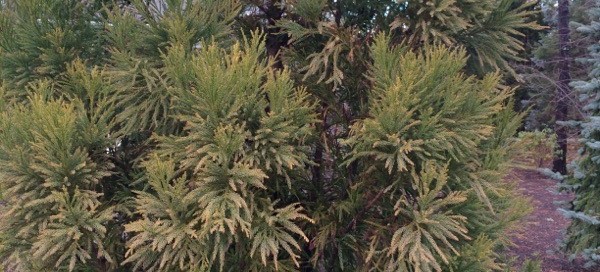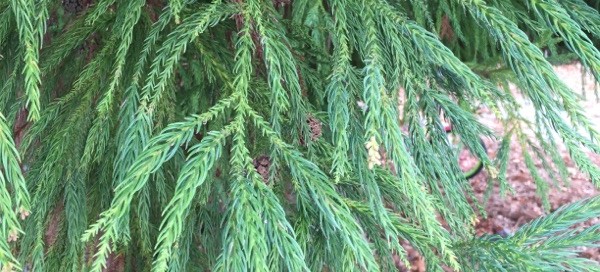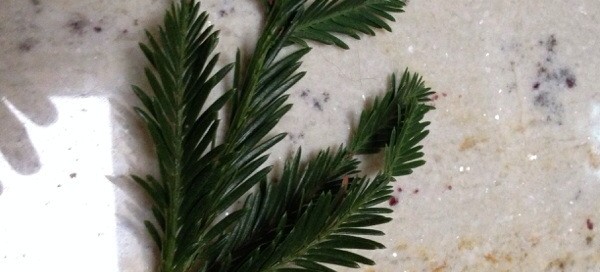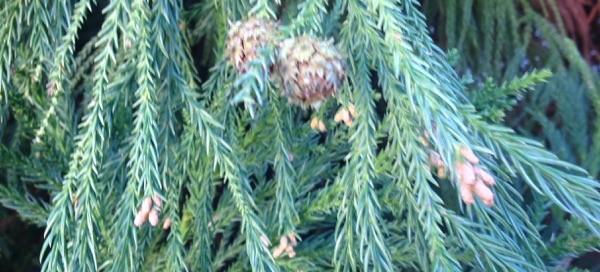Japanese Cedar
This is a Cryptomeria, aka a Japanese Cedar. The foliage is especially striking in the Northeast in November and December. In fact, many people love this plant for using the greens in arrangements, containers, wreaths etc during the holidays. Grow this plant in full or part sun, but allow room because even the so-called "dwarf" versions get large. Note too that the foliage that is so light green at this time of year will get bronze in color in January or February, leading many people to think it's dead. (We say "bronze" but it's really a rusty brown and dead looking!) The plant greens up again when milder temps return in March or April. You can see a great HUGE example of this plant at Blithwold in Rhode Island, should you be in Newport in the future.



